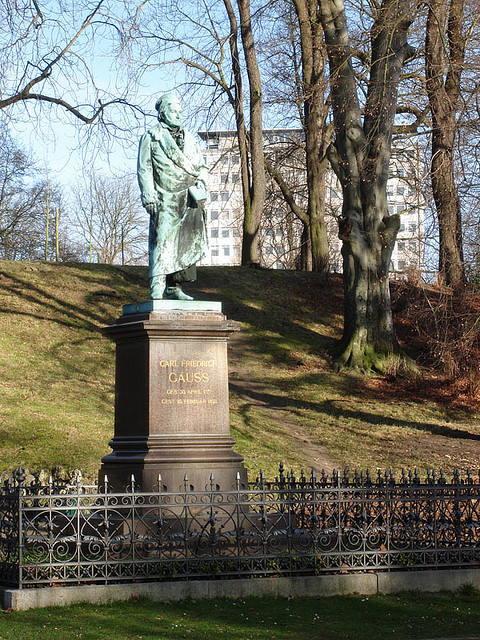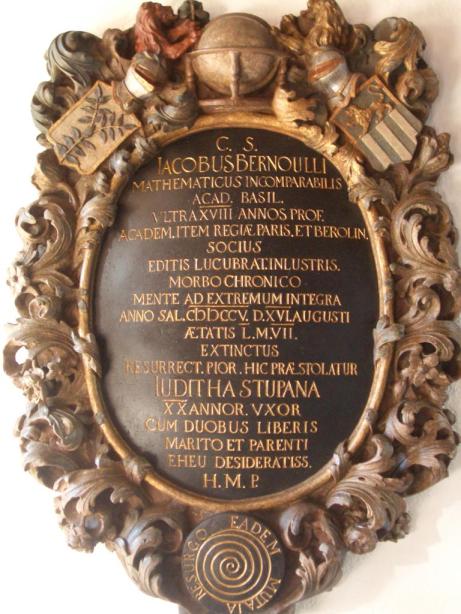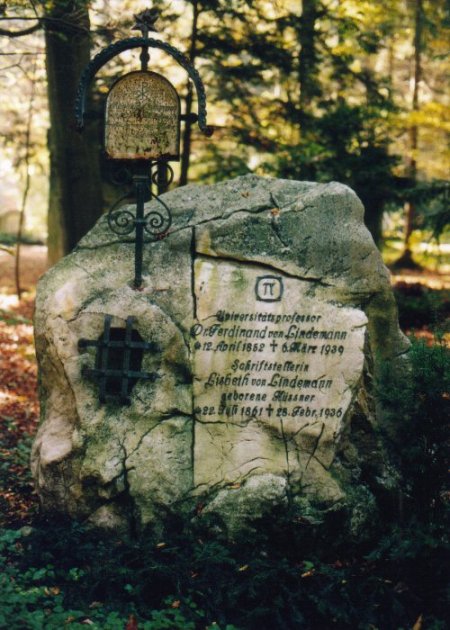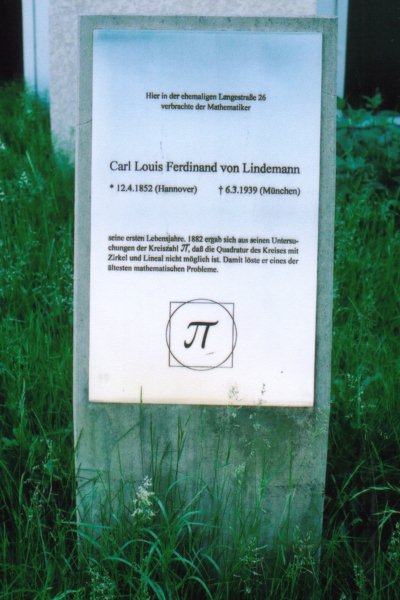I’ve come across a few mathematicians or scientists who have been so proud of their scholarly achievements that they’ve asked for them to be put on their headstone when they die (or have had their achievements placed on their headstones by someone else). Please let me know if you know of others. [Update: thanks to folks on Twitter I learned of a few more. I’ve added them to the list.]
Archimedes—sphere/cylinder
Archimedes’s mathematical accomplishments are numerous. But he requested that his tombstone display a sphere inscribed in a cylinder with the ratio 3:2. He was proud of his discovery that the ratio of the volume of the cylinder to the sphere and the ratio of the surface area of the cylinder (including the top and bottom) to the sphere are both 3:2. (He not only discovered the volume and surface area formulas for the sphere, but also showed that the same constant, pi, appeared in these formulas and the formulas for the circle.)
Carl Friedrich Gauss—17-gon (the heptadecagon)
The Greeks knew how to inscribe in a circle, using only a straightedge and compass, an equilateral triangle (3-gon), a square (4-gon), a regular pentagon (5-gon), a regular pentadecagon (15-gon), and any -gon,
-gon,
-gon, and
-gon. That’s it. Then, 2000 years later, the 18 year old Gauss showed that it was possible to do the same with a 17-gon (and later certain other regular polygons). He was so proud of this discovery that he decided to pursue a career in mathematics. He also asked that a 17-gon be inscribed on his tombstone. His wish was not honored, but
it was later inscribed on a memorial in his honor in his home town of Brunswick. (If anyone knows where I can find a photo of it, please link to it in the comments.) [Update:] a 17-pointed star was inscribed on a memorial erected in his honor in his home town of Brunswick. In the photo below you can (barely) see the star under Gauss’s right foot. Here is a closeup.

Ludolph Van Ceulen—the first 35 digits of π
Ludolph Van Ceulen spent most of his life computing the first 35 digits of pi. He used Archimedes’ technique and polygons of sides! His tombstone contained his upper and lower bounds for pi. The original tombstone disappeared some time around 1800; a replica is shown below.

Jacob Bernoulli—logarithmic spiral
Bernoulli was so enamored with the logarithmic spiral that he wanted it engraved on his headstone. However, the engraver accidentally carved an Archimedean spiral.

Ludwig Boltzmann—his entropy formula
The tombstone of physicist Ludwig Boltzmann contains his entropy formula .
Paul Dirac—the Dirac equation
This burial plaque can be found in Westminster Abbey, not far from Isaac Newton’s resting place. It contains Dirac’s relativistic electron equation, .

Ferdinand von Lindemann—circle, square, pi
In 1882 Lindemann proved that pi is a transcendental number. This put to rest the 2000+ year old question of whether it is possible to “square the circle“—i.e., construct, using only a compass and straightedge, a square having the same area as a given circle. (He proved that it was impossible.) His grave has a circle superimposed on a square, surrounding the symbol pi.

[Update: Here’s a memorial for Lindemann that also has the circle/square/pi in it. It is in the city of his birth, Hanover. Thanks to Pat Ballew for the image!]
Henry Perigal—proof of the Pythagorean theorem
Henry Perigal was an amateur mathematician who discovered the “dissection proof” of the Pythagorean theorem. The proof can now by found carved into his headstone.


Alfred Clebsch—his grave says “Mathematiker” on it


The words in the mis- spiral at the bottom, “Eadem mutata resurgo”, translate to “Though changed I shall arise the same” so I am told… it refers to that quality of the spiral to remain the same under transformation.
Thanks, Pat. And thanks for the heads-up about Lindemann and Perigal.
Albert Einstein never had a tombstone (he was cremated, sans brain, and his remains were poured into the Delaware River near Trenton), but if he had, which of his two best known equations would have been written thereon?
William Kingdon Clifford of Clifford Algebras fame had the best epitaph IMO:
“I was not, and was conceived. I loved and did a little work. I am not and grieve not.”
Very concise and descriptive, just like a good Mathematician’s work. :-)
Regarding Gauss in Brunswick, is this page a start? : http://commons.wikimedia.org/wiki/File:Braunschweig_Brunswick_Gauss-Denkmal_komplett_(2006).JPG
That’s the clearest image of the memorial I’ve seen… but I don’t see the 17-gon (do you?). It would be nice to see a close-up.
Dave, it is the base of the pedastal that is supposed to be a heptadecagon.
Do you have a source for that, Pat? The more I look into this the less certain I am of anything.
Most sources say that the 17-gon is inscribed in the memorial. This source says that the memorial doesn’t have a 17-gon, but a 17-pointed star. I did, eventually, find your solution, that the pedestal is in the shape of a 17-gon.
What’s the truth? Have you been there to look at it? An eyewitness source would be excellent.
It was intended to be a 17-gon but the sculpturer refused saying that the shape would be indistinguishable from a circle…
http://www.billthelizard.com/2009/01/gauss.html
Dave, I haven’t been there (got at close as Weisbaden but couldn’t get up even to Gottingen).. I don’t know the russian? author, but Jeremy Gray is usually a first rate historian. I think he is still at Open University. will try to contact.
Pat, I found a picture of the Gauss monument and updated the post. See above!
Hi Dave,
This is very interesting! Thanks for compiling it.
José
Fagnano, whose work on Bernoulli’s lemniscate kickstarted the theory of elliptic functions, had a lemniscate engraved into his tombstone at the Church of Santa Maria Magdalena in Senigallia, aong with the words ‘Veritas Deo Gloria’. This is according to Schappacher, Some Milestones in Lemniscatomy. I can’t find a photo of his tombstone, but it may be similar to the inxcription on the title pge of Fagnano’s collected papers http://web.unife.it/progetti/geometria/divulg/Funzioniellittiche/manoscArio_file/produzionimatfagnano.png
Thanks for the tip! I appreciate it. (I’ve also never heard of “lemniscatomy.”)
What a great post. I have also ventured off the beaten path to visit the graves of famous mathematicians but unlike you did not have the presence of mind to inspect their monuments for symbols and patterns. Even if this trend catches on and everybody starts decorating their tombs theorems we won’t run out and perhaps ventures like TheoryMine http://theorymine.co.uk/
might even turn a profit.
Calvin Smith posted a photo of a tombstone with a mysterious equation on Google+: https://plus.google.com/+CalvinSmith79/posts/gN2fdCjd5jE. It looks like it belongs to the actuary Albert Quiquet.